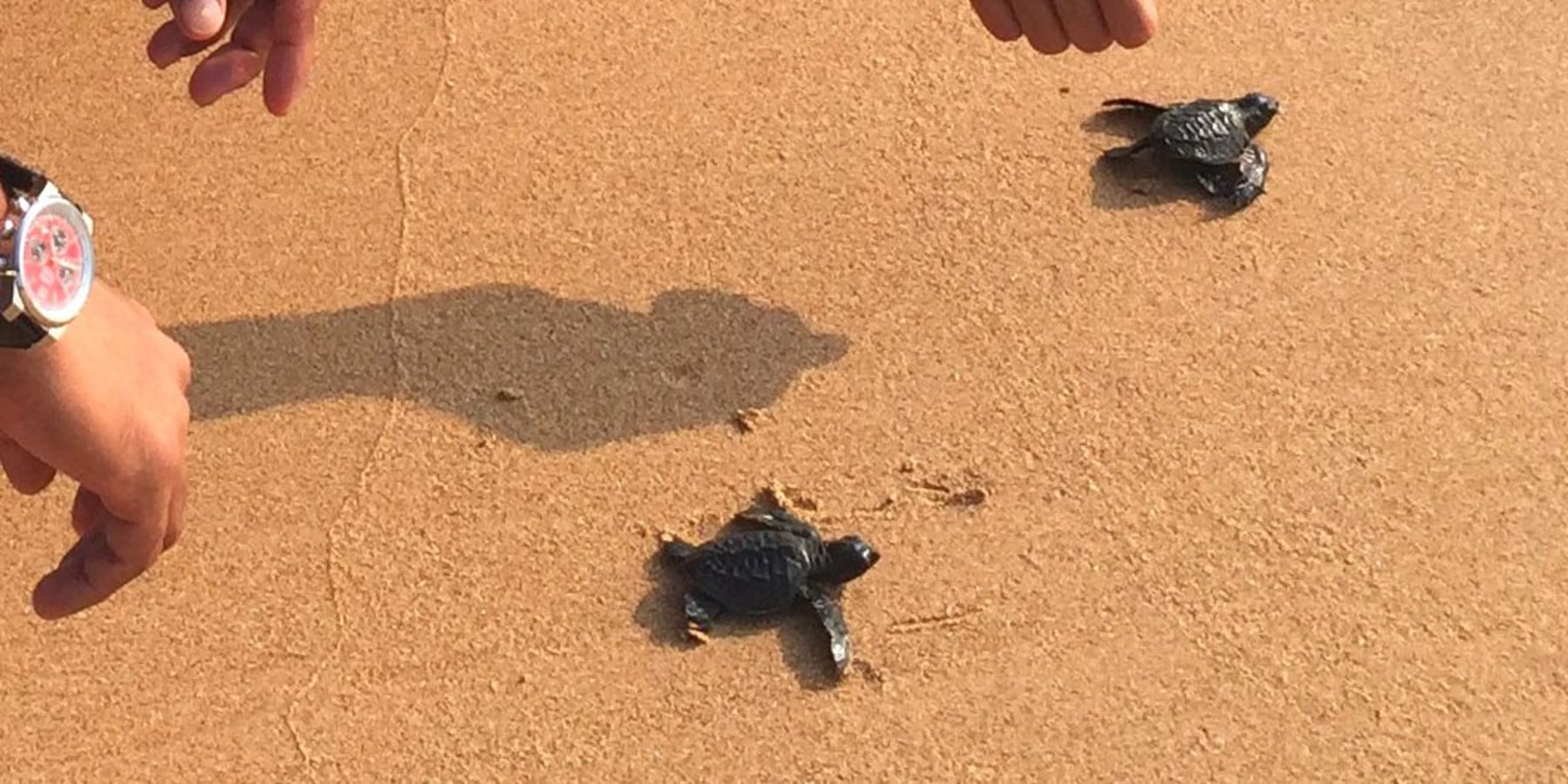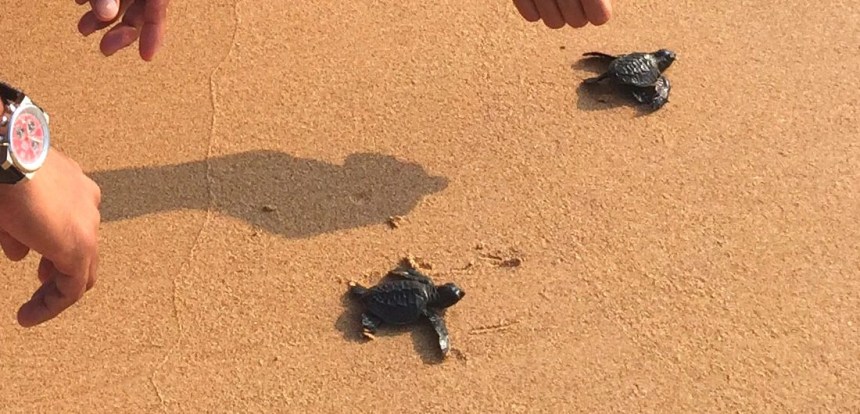
The beaches of Sri Lanka are the nesting grounds for five species of marine turtles. They are the Green Turtle, the Leatherback, the Hawksbill, the Loggerhead and the Olive Ridley. All 5 species have been recorded to nest along specific areas of Sri Lanka’s coast. Studies have indicated that beaches can be categorized in accordance with visitation by different species of turtles.For example Leatherbacks nest at Walawe Modera and Godawaya. Hawksbill nests at Bentota while Green Turtle nests at Rekawa and Kosgoda. Loggerheads nest at Welipatanwala. Olive Ridleys are the only species of turtle that nest everywhere.
There are 18 hatcheries found along the southern coastal line; of them, nine hatcheries are found in the district of Galle and one is found in the district of Hambantota. According to statistics from 1996 to 1999, nearly a hundred thousand sea turtles were hatched and released to the sea from these hatcheries.
Induruwa: Green Turtle, Olive Ridley Turtle and Leatherback Turtle.
Kosgoda: Loggerhead Turtle, Hawksbill Turtle, Green Turtle, Olive Ridley turtle and the Leatherback.
Turtle Akurala: Green Turtle.
Mavela: Green Turtle and Leatherback Turtle.
Kahandamodara: Unknown species of turtles visit the area.
Usangoda: Leatherback Turtle.
Ambalantota: Green Turtle and Leatherback Turtle.
Bundala: Green Turtle, Olive Ridley Turtle, Leatherback Turtle, Loggerhead Turtle and Hawksbill Turtle.
Yala: Green Turtle, Leatherback Turtle and Olive Ridley TurtleKandakuliya: In this area, thousands of Olive Ridley Turtles are found every year. So far no nesting has been found.
Regrettably a large number of visiting turtles are caught by local fishermen for flesh and shells, which is a lucrative market. All turtles and their products are fully protected in Sri Lanka under the Fauna and Flora Protection Ordinance, as well as by International Law. Anyone found guilty of committing this offence will be liable for a jail sentence and/or fines.
If you want to see turtles visiting the South Western and South Eastern coastal villages you can do this at night from a distance with the aid of binoculars. Nesting turtles should not be disturbed and light disturbances should be minimized at night.


